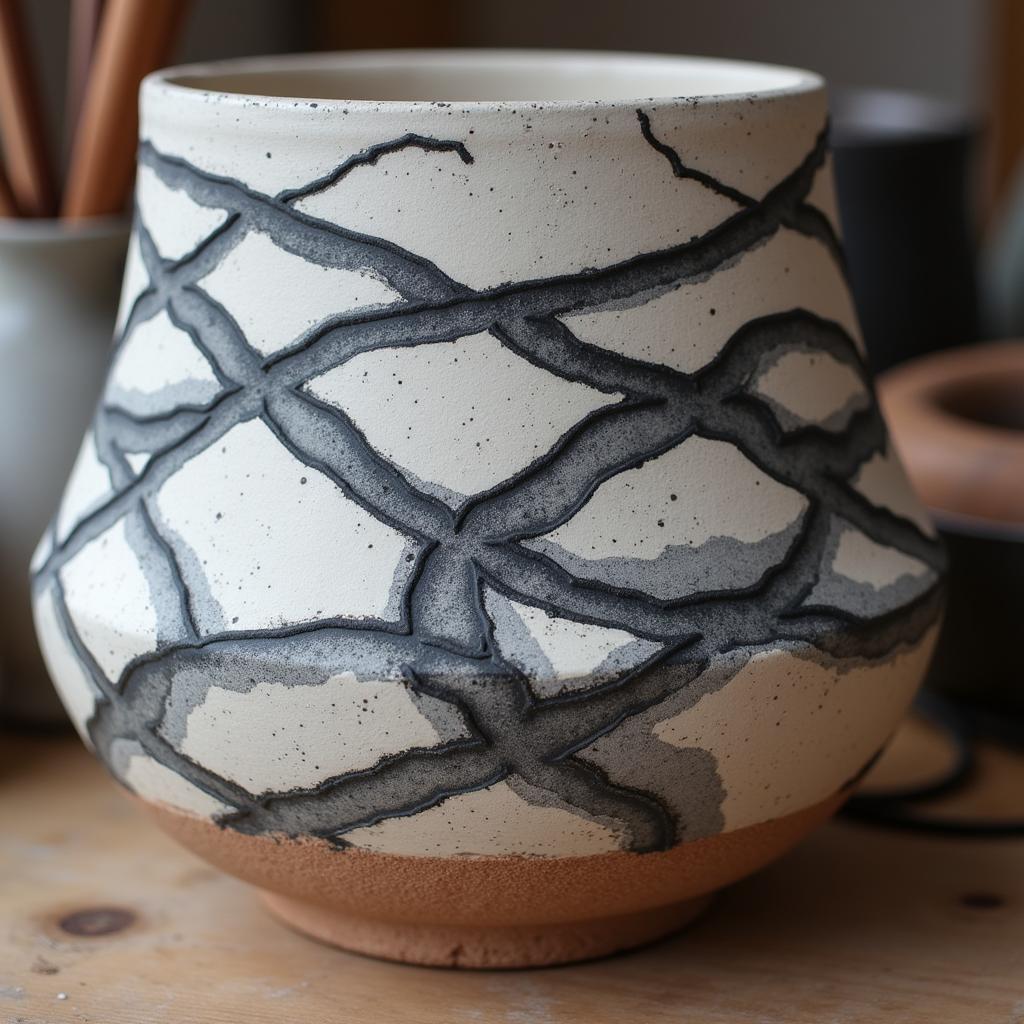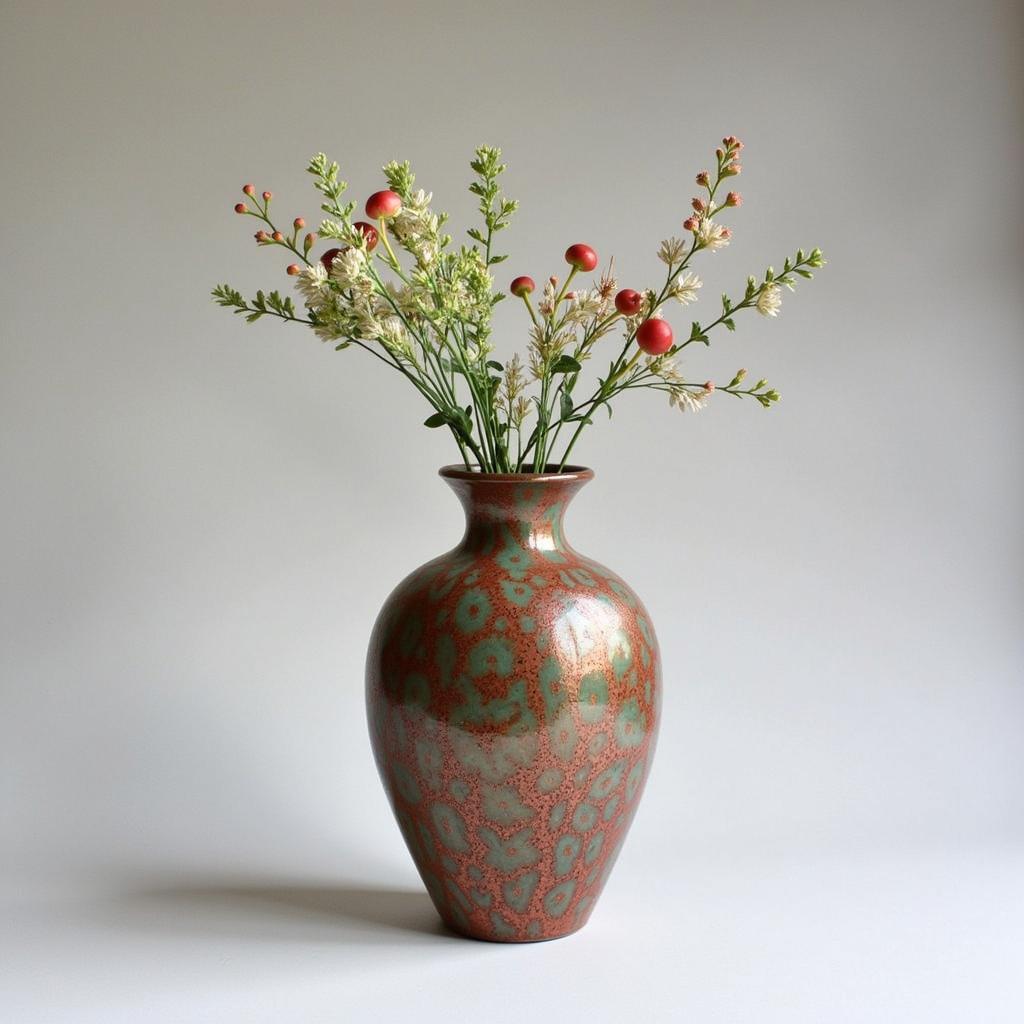Horse Hair Raku, a captivating ceramic technique, utilizes the unique properties of horse hair to create stunning, one-of-a-kind patterns on pottery. This mesmerizing process involves the burning of horsehair onto the surface of a heated ceramic piece, resulting in intricate designs that are both beautiful and unpredictable.
 Horse hair raku pottery with intricate patterns
Horse hair raku pottery with intricate patterns
What is Horse Hair Raku?
The origins of raku firing techniques can be traced back to 16th century Japan. Horse hair raku, however, is a more recent adaptation, gaining popularity in the United States during the latter half of the 20th century. The process involves removing a red-hot piece of pottery from a kiln and placing it immediately into a container filled with combustible materials, such as horse hair. The extreme heat causes the hair to burn onto the surface, leaving behind carbon deposits that create striking patterns.
The Allure of Horse Hair Raku
Horse hair raku’s appeal lies in its unpredictability and organic beauty. Each piece is unique, as the patterns created by the burning hair are influenced by a multitude of factors, including:
- Type of hair: Different types of horsehair, with varying thickness and texture, will produce distinct patterns.
- Application method: The way in which the hair is applied to the hot pottery, whether in bundles, strands, or swirls, will significantly impact the final design.
- Firing temperature: The intensity of the heat will affect the speed and intensity of the hair burning, leading to variations in pattern and color.
The Process of Creating Horse Hair Raku
While seemingly simple, the horse hair raku technique requires skill, precision, and a deep understanding of both ceramics and fire. The process typically involves the following steps:
- Bisque Firing: The ceramic piece is first bisque fired, a process that hardens the clay and prepares it for glazing.
- Glazing: A glaze is applied to the bisque-fired piece, which will ultimately provide the background color for the horse hair patterns.
- Raku Firing: The glazed piece is then fired in a raku kiln, reaching temperatures of around 1800 degrees Fahrenheit.
- Hair Application: Once the piece reaches the desired temperature, it is carefully removed from the kiln and the horse hair is applied.
- Reduction: The piece, now adorned with burning hair, is then placed in a reduction chamber filled with combustible materials. This process starves the fire of oxygen, resulting in unique smoky effects and color variations.
- Cooling: After the reduction process, the piece is allowed to cool slowly, revealing the final horse hair raku design.
Expert Insights on Horse Hair Raku
“Horse hair raku is a dance between fire, clay, and the artist’s intuition,” says renowned ceramic artist, Emily Carter. “It’s a process that embraces the unexpected and celebrates the beauty of imperfection.”
 A stunning horse hair raku vase adorned with wildflowers.
A stunning horse hair raku vase adorned with wildflowers.
Conclusion
Horse hair raku, with its blend of ancient techniques and modern artistry, continues to captivate artists and art enthusiasts alike. The mesmerizing patterns, born from the fusion of fire and horsehair, serve as a testament to the unpredictable beauty found in the natural world. Whether adorning a functional piece of pottery or standing alone as a work of art, horse hair raku offers a unique blend of artistry, craftsmanship, and the allure of the unexpected.
Need help with your horse or pet? Contact us!
Phone: 0772127271
Email: [email protected]
Address: QGM2+WX2, Vị Trung, Vị Thuỷ, Hậu Giang, Việt Nam
We have a 24/7 customer service team!